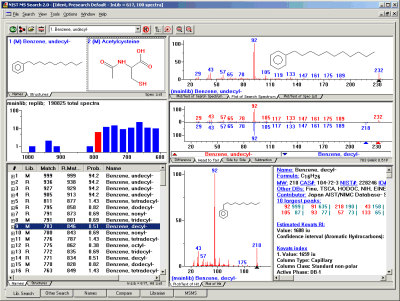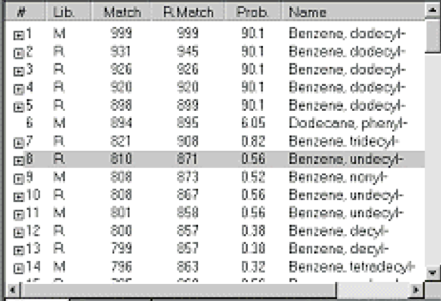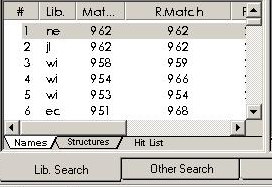In our prior post, CRMs: Reference materials and standards, we saw how the library is important in analytical chemistry. It enables the analyst to compare the unknown to a known to arrive at an opinion that is often expressed as a conclusion. We saw that there are many different commercial sources for these libraries. In fact, some systems allow the analyst to exercise his/her discretion in employing his/her own standards as opposed to the commercially available ones that are CRMs.
Electron Ionization (EI) based Mass Spectrometry has been so fantastically removed from the base of the science, that it has been simplified to accommodate the masses. In the modern crime lab, it has been reduced to simple computer-assisted pattern recognition.
Sadly gone are the days of acid-based chemistry to elucidate mass spectral patterns. Instead, just let the computer do it. Computers are never, wrong are they?
This is what one of the NIST 08 library screenshot looks like:

But what if it is not a traceable source? What if it is not a perfect match meaning 100% probability? As we can see from this screenshot there is a list of probabilities.

There is a judgment call that is made even in GC/MS.

Why are state scientists allowed to come in and present a conclusion that is really an opinion that an unknown is definitely a known substance? Why aren’t court’s forcing the truth be presented? Why the cover up?



Ethan Strauss says:
It is true that Mass Spec involves computer assisted pattern recognition and there is some uncertainty, but there is uncertainty in everything. Perhaps results of this type of analysis should be presented as opinion, but it is informed opinion, not random opinion.
How should this data be reported?
An astronomer, a physicist and a mathematician are on a train in Scotland. The astronomer looks out of the window, sees a black sheep standing in a field, and remarks, “How odd. Scottish sheep are black.” “No, no, no!” says the physicist. “Only some Scottish sheep are black.” The mathematician rolls his eyes at his companions’ muddled thinking and says, “In Scotland, there is at least one sheep, at least one side of which appears to be black from here.”
Ethan